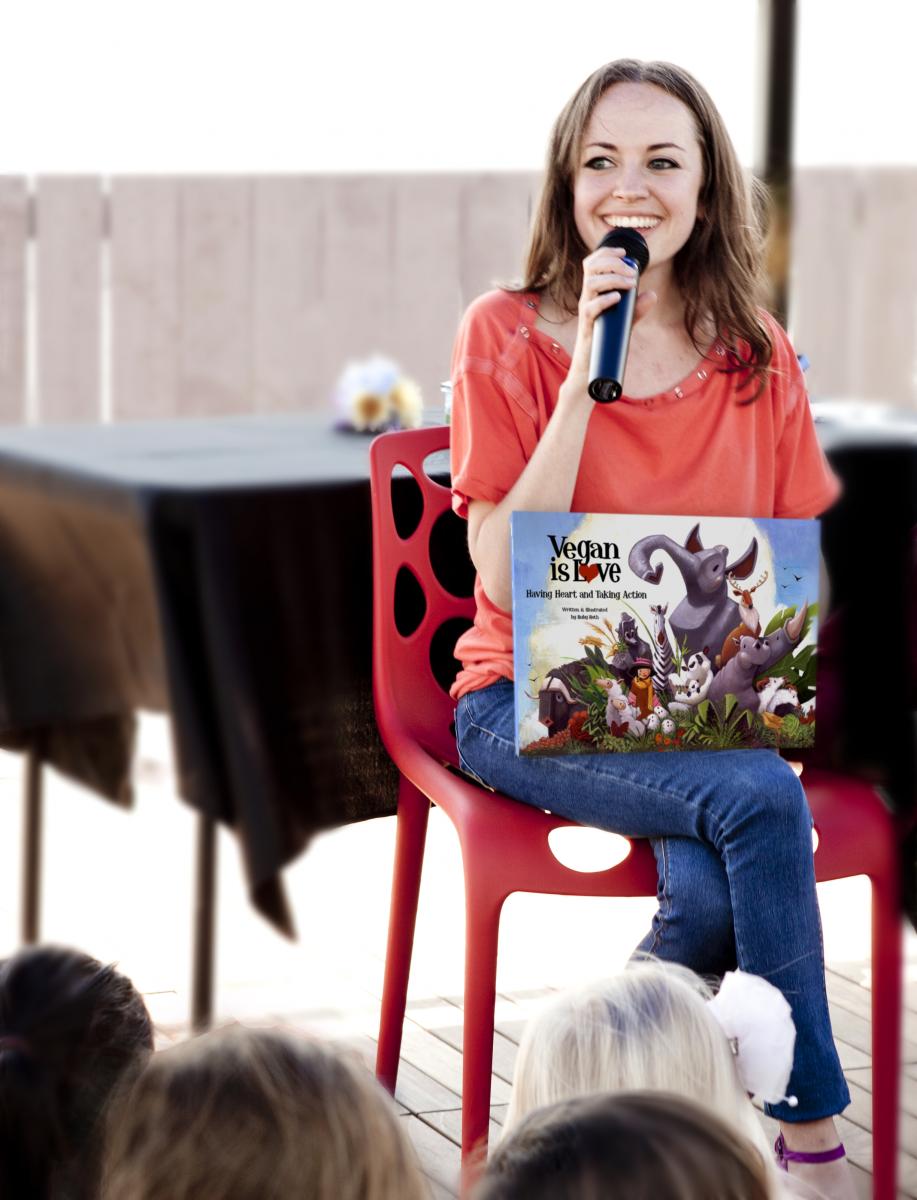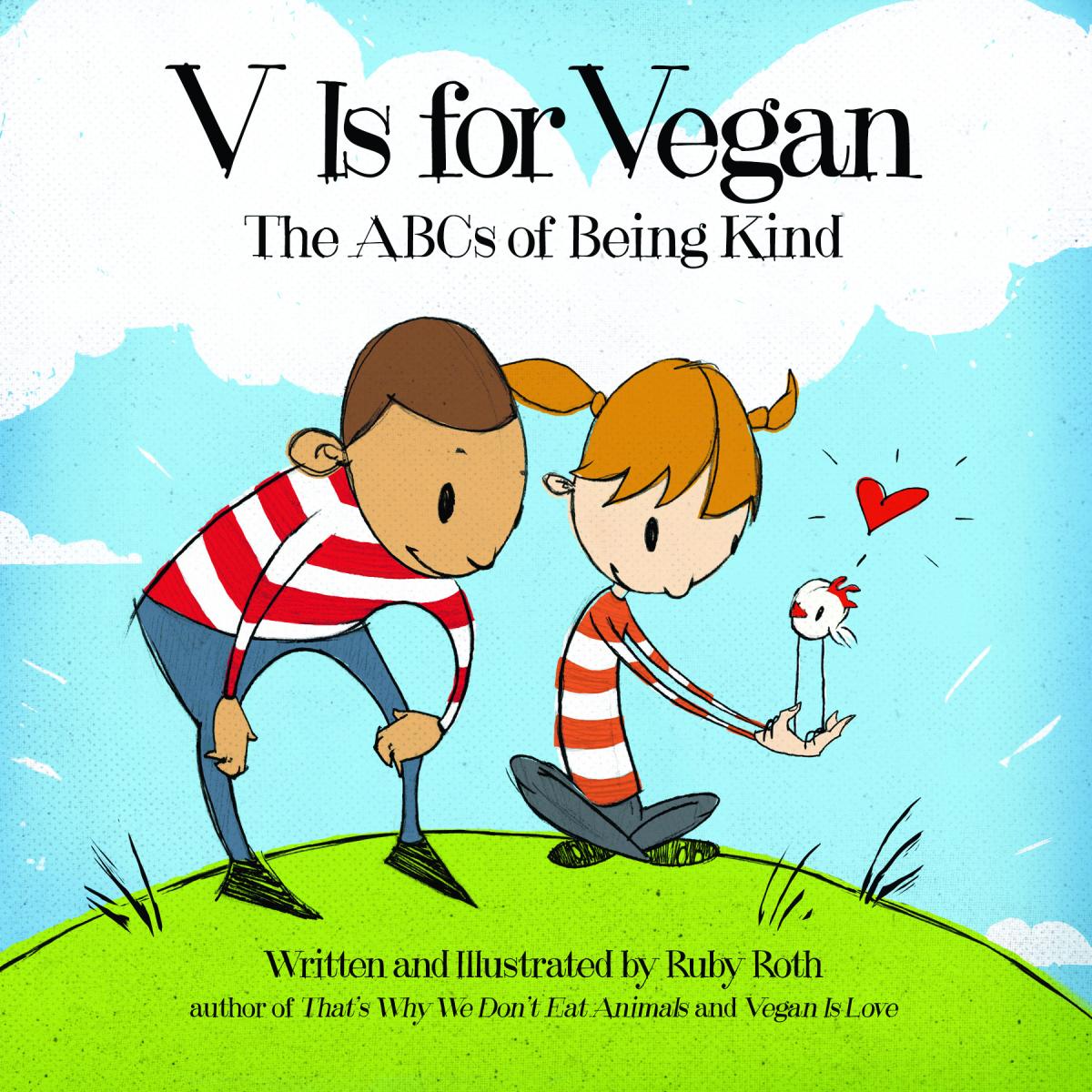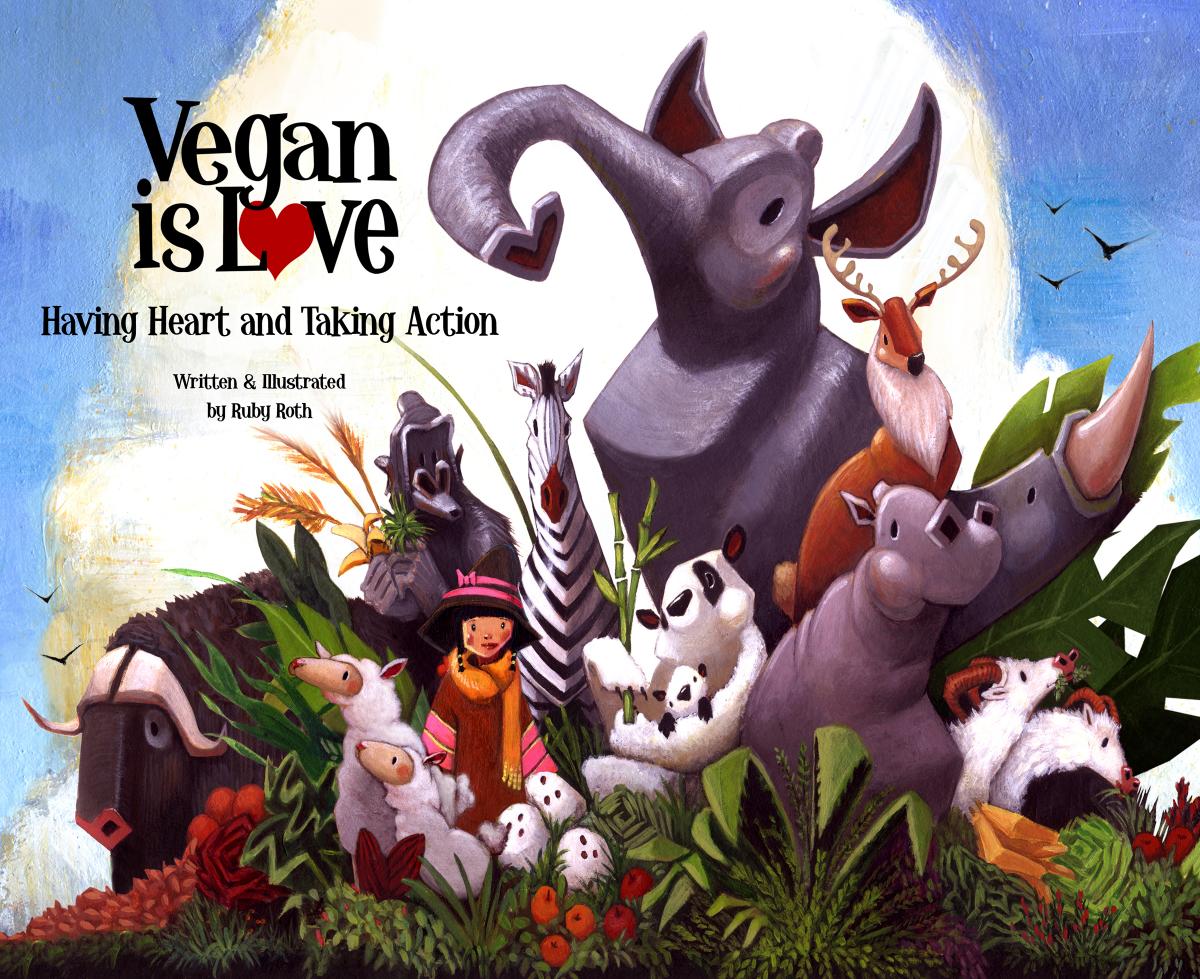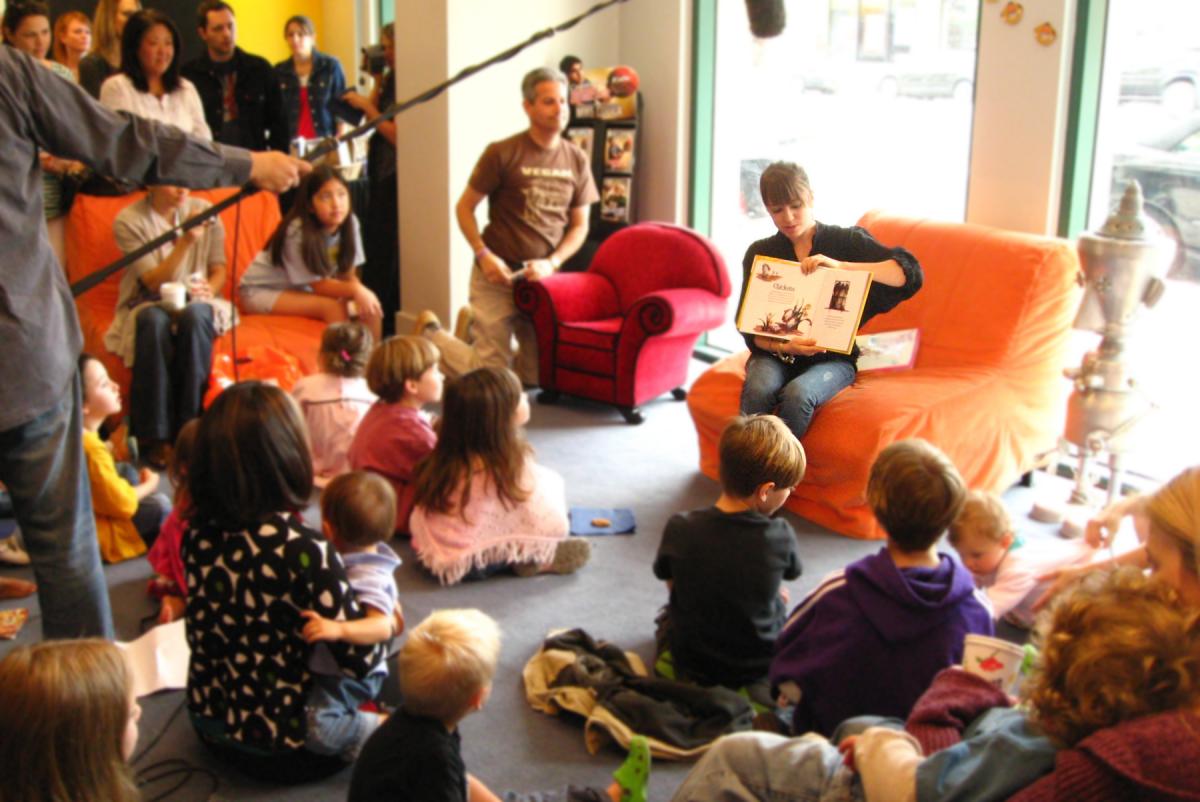Elena Orde speaks to vegan children's author Ruby Roth about empowering children to love deeply, think critically and act responsibly
 Even the titles of Ruby Roth’s works are enough to give any vegan hope for the future. Part of the charm and attraction of her books lies in how they present veganism not just as compassionate, but as normal. In this way, V is for Vegan, That’s Why We Don’t Eat Animals and Vegan is Love offer carers and children alike a stronger sense of confidence and community. Earlier this year I took the opportunity to talk to Ruby about her own path to veganism, facing public criticism and what speaking to children has taught her about animal rights.
Even the titles of Ruby Roth’s works are enough to give any vegan hope for the future. Part of the charm and attraction of her books lies in how they present veganism not just as compassionate, but as normal. In this way, V is for Vegan, That’s Why We Don’t Eat Animals and Vegan is Love offer carers and children alike a stronger sense of confidence and community. Earlier this year I took the opportunity to talk to Ruby about her own path to veganism, facing public criticism and what speaking to children has taught her about animal rights.
Joining the dots
When asked about her own transition to veganism Ruby responds, “I think I was always vegan at heart, I just didn’t know it until a vegan friend pointed out that my eating habits didn’t match my morals and values.” Many of us can empathise with this – the moment where we join the dots and realise that we can do far more to live compassionately.
“I was studying social justice history and involved in progressive political causes, but I had never considered veganism until that moment. After learning some basic facts, I went vegan as a health experiment and never went back. The deeper into the research I got, the more solidified my decision became.”
A desire to share these revelations with others has resulted in a creative and fulfilling career. But why did Ruby want to take this message to children specifically? She says, “I think it’s up to people, not governments, to create change, and in this regard, children represent the future of the world’s state.” Choosing to communicate through the picture-book format was a no-brainer.
“I was always set on being an artist, but I wanted to create art with a purpose and meaning beyond self-expression. Through non-fiction picture books, I found a way to continue to work on political issues and stay in my lane at the same time. Picture books were an essential part of my childhood and so many made lasting impressions on me, to this day. I wanted to create something that spoke to kids in a language they understand, without sugar-coating or beating around the bush.”
Too scary to eat

Ruby’s honest message and clear language is the reason she’s encountered so much resistance from the public. She says, “At the height of my books’ presence in major media, I received plenty of hate mail about brainwashing children and shoving my lifestyle down people’s throats, and on and on.” Invited to speak on most of the major news channels in the US, Ruby was also accused of scaring youngsters. Her response highlighted the hypocrisy in public thinking. “There is nothing more graphic in my book than what any child would see on any given day in the supermarket deli section or in the myriad television shows about hunting, fishing, or cooking. If it’s too scary to talk about, then it’s certainly too scary to eat.”
Endlessly curious as children are, vegans and non-vegans need to be prepared to be questioned on where animal products come from. But are these answers really too ‘scary’ for children – or is this a notion that adults who have yet to question their own actions hide behind? In her books, Ruby provides insights to these questions in an informative and accessible way tailored to suit different ages. V is for Vegan, aimed at younger children, is an ethical alphabet song written in catchy rhyme, beginning: “Aa is for animals – friends, not food. We don’t eat our friends, they’d find it quite rude.”
A more mature tone is used in Vegan is Love, written for children aged seven and up. One of the core arguments of the book is summarised in the line: “All animals raised for meat and dairy are captured and killed in the end. Their deaths are violent and sad.” Strong and sad though this assertion is, nothing is overstated or sensationalised. The undressed truth is enough.
Young philosophers

Ruby’s works are filled with colourful, dynamic images of animals. These stylized figures are far removed from the Disnified characters often found in children’s cartoons – is this a conscious decision? “Absolutely! Anthropomorphisation takes away from the real rich emotional lives of animals as well as the intelligence of children. I don’t paint my animals smiling huge grins or with giant dewy eyes, and in general I steer clear of making them talk. We don’t need to make animals ‘serve’ kids in pretend, make-believe ways in order to get them to pay attention.”
In Ruby’s experience reading to hundreds of children in school settings, attention is not something she has to battle for. “Kids react to veganism with much more diplomacy than adults do. They get quiet, they think, they ask questions and offer insights. You can really have great philosophical discussions with kids because their imaginations and their love for nature and animals makes them so open to thinking about the world as it is and asking, ‘Why?’ ”
When delivering school talks, learning is a two-way street. “During a reading, a girl of around ten once shared a conclusion she had come to – that factory farms reminded her of slavery, which she was studying in history. I was very proud of her insights. It was a learning moment for me, about the vast capabilities of kids to understand complicated issues when adults decide to include them in the conversation. Children have taught me that we’re born with an inclination to care about the wellbeing of all living things, and conditioned over time to accept that use and abuse is normal and necessary.”
Planting seeds
 Ruby’s testimonials give strength to anyone with an interest in the future of veganism and animal rights. It’s important to remember that those of us without a similar platform can still inspire the young people around us to think about vegan issues.
Ruby’s testimonials give strength to anyone with an interest in the future of veganism and animal rights. It’s important to remember that those of us without a similar platform can still inspire the young people around us to think about vegan issues.
I have personally struggled when the topic of veganism comes up during visits to non-vegan families. I’ve found myself hesitating at the simplest of questions a child can ask, such as “Why can’t you eat that?” Ruby gives her advice. “Whatever you say, say it casually and lightly, without any hesitation or avoidance, which would make what you’re saying feel taboo. You have to treat it like any other social studies subject about how people around the world choose to live, eat and think. If you must, in order to get an idea across, you can offer ‘balanced’ information – for example, ‘In some cultures, it’s normal to eat dogs! In others, people choose not to eat animals at all. Those people are called vegans…’ You are planting seeds, opening minds, and teaching about tolerance and options.”
Ruby has just released her fourth book – The Help Yourself Cookbook for Kids: 60+ Easy Plant-Based Recipes Kids Can Make to Stay Healthy and Save the Earth. Including healthy, fun recipe ideas such as Presto Pesto, Pink Couscous and Hungry Caterpillar Nori Rolls, each page is wonderfully laid out, with hand-drawn cartoons, jokes and scientific titbits, plus plenty of ideas and encouragement for children to make their own creative decisions. This title fits in perfectly with Ruby’s ideal of empowering children to make their own choices. Who knows – if we let children call the shots about how we treat other animals, we could kickstart our vegan revolution.
Visit We Don't Eat Animals to read more about Ruby’s work.
By Elena Orde
Would you like to write for our blog? Read our guidelines, then email web[at]vegansociety[dot]com with your pitch.
The views expressed by our bloggers are not necessarily the views of The Vegan Society.


Comments
I am an egyption boy i am
Vegan childrens books
Apologies
TVP?